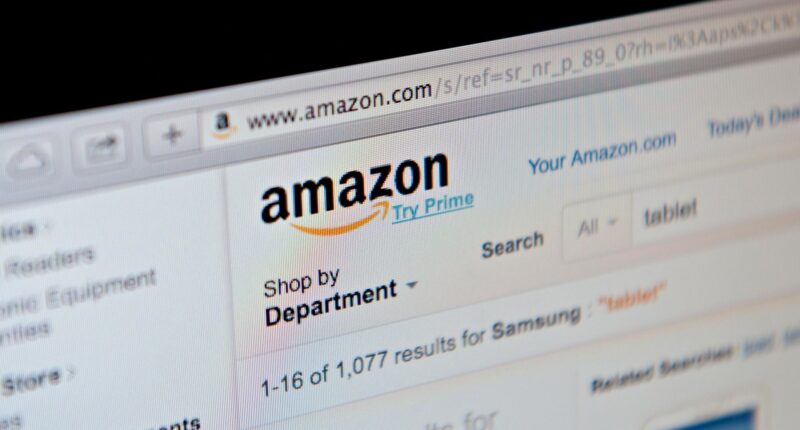
Opinions expressed by Entrepreneur contributors are their own.
Marketplaces have become extremely influential in ecommerce over the past three years. Major market players such as Amazon, Alibaba and JD attract millions of users, facilitating massive transactions across a wide range of product categories.
They also generate a wealth of data on consumer behavior, preferences and trends. This strong market position gives them an advantage and the ability to charge unreasonably high commissions, basically robbing brands.
The rise of marketplaces
The journey of marketplaces goes back to the early days of the Internet when platforms such as eBay and Amazon pioneered the concept of online commerce. Founded in 1994 as an online bookstore, Amazon has evolved into a comprehensive marketplace offering a wide range of goods. eBay, launched a year later, popularized the concept of consumer-to-consumer online auctions. China’s JD.com and Alibaba also burst onto the market in the late 20th century.
With the growth of ecommerce, niche and vertical platforms began to flourish. They focused on specific industries or product categories. A prime example is Etsy, a marketplace for handmade and vintage goods founded in 2005. And as technology has evolved, so have the capabilities of marketplaces. The introduction of secure payment systems, improved search algorithms and user-friendly interfaces have provided a new level of convenience, trust, and efficiency in online shopping.
However, it wasn’t until after the pandemic that marketplaces took off. The year 2020 was a stellar time for them and e-commerce in general. Online platforms have become critical for brands to reach a broader customer base. In 2021, a whopping 42% of all online purchases were made through marketplaces. The convenience of shopping from home, the ability to compare prices and read customer reviews, and the seamless transaction process for customers have contributed to the rapid growth of online platforms. And in 2022, almost two-thirds of consumers said they were happy to be able to order everything they needed through one merchant.
By 2027, third-party marketplaces will become the world’s largest and fastest-growing retail channel, accounting for nearly two-thirds of online sales. Amazon, Alibaba, Pinduoduo and JD.com are expected to generate $4.3 trillion in global sales, up from $2.5 trillion today. Experts say that the most successful retailers, both now and in the future, will operate third-party marketplaces, and consumer brands must align with them to flourish in this new retail environment.
Although the concept of marketplaces itself is beneficial, including for brands, the strong position of online platforms has allowed them to dictate their terms to sellers and vendors and practically rob them.
Related: 7 Revenue-Killing Mistakes for Ecommerce Retailers
How online platforms make money on brands
In the early days of marketplaces, when they needed to attract new suppliers to basically unknown platforms, contract conditions for vendors and commissions for sellers were usually based on a small percentage of the transaction amount. As marketplaces expanded and diversified, they introduced tiered commission structures to incentivize sellers with high sales volume. Those who achieved such volumes or met specific performance criteria could qualify for lower commissions, which offered a potential savings advantage.
With time, marketplaces expanded their revenue streams by introducing additional services. They included premium placement in search results, featured listings, advertising options, and other services such as fulfillment, delivery, and marketing support. With these, marketplaces generate additional revenue while allowing merchants to increase their visibility. The problem is that though online platforms aim to increase the effectiveness of services and tools offered to sellers, their main goal is still to earn more by raising the penetration of those products, not optimizing sales for specific brands.
As a result, Amazon, for example, now gets more than 50% of sellers’ revenue on average, compared to 40 percent five years ago. Sellers are paying more because Amazon has increased fulfillment fees, making advertising costs inevitable. The typical Amazon seller pays 15% per transaction, 20-35% for order fulfillment, and up to 15% for advertising and promotions. The cost of Fulfillment by Amazon, when Amazon stores, picks, packs, and ships orders, has been steadily rising, and there are few success stories of operating outside of this model. Advertising is optional, but it takes up most of the screen with the best conversions, so sellers inevitably have to buy Amazon advertising services to get noticed.
The company has even been sued recently. According to the claim, Amazon penalizes sellers for failing to set the optimal price for their products by demoting them in search results and disqualifying products from the “Buy Box” feature, a white box on the right side of the Amazon product detail page, where clients can add goods for purchase to their cart.
The power of AI
With the growing influence of artificial intelligence, companies can now leverage AI to expand their presence, optimize operations and ultimately generate more revenue. We estimate that the global retail AI market will be worth about $350 billion by 2032 as more companies realize the benefits of neural networks and take advantage of them.
Marketplaces already use AI-based tools that provide valuable insights into consumer behavior, campaign performance, and keyword search. Their main goal is to increase sales, and algorithms help them calculate which sellers’ products are worth promoting to maximize overall revenue. Online platforms analyze customer buying behavior, items in the shopping cart and the most viewed items to make recommendations, predicting what each client is likely to buy.
Brands, too, can use AI to get to the top of marketplace search and increase the share of sales in their categories at the expense of internal marketplace traffic. However, sellers cannot access marketplace AI models. Platforms keep information about their developments secret and notify merchants of updates only when they occur. In Amazon’s case, Amazon Vendor Service can be used to access some of the AI functionality, but it increases the cost of doing business. At the same time, the service itself remains a black box. It means that brands cannot use platforms’ AI to promote their products. It also means they need third-party solutions to do so. What exactly would such AI solutions offer them?
Related: How to Leverage the Power of ChatGPT and AI to Boost Your Shopify Store’s Success
1. Intelligent and dynamic pricing
AI solutions enable brands to implement intelligent pricing strategies. By analyzing market data, competitor pricing, and customer demand patterns, AI can determine optimal price points for products. Dynamic pricing allows sellers to adjust prices in real time based on factors such as supply and demand fluctuations, competitor activities, and customer behavior. This ensures that sellers remain competitive and maximize their revenue potential on marketplaces. Our experience shows that using AI to determine pricing allows sellers to recover up to 6% of previously lost margins.
2. Intelligent adjustment for performance bids
Leading marketplaces usually use real-time bidding (RTB) systems allowing advertisers to bid to show their ads to buyers. For example, on Amazon sellers bid on keywords, and the one with the highest bid and the best-targeted keywords usually wins. In other words, the winning bidding strategy is when the buyer’s search query matches the seller’s target keywords.
With real-time data and advanced optimization techniques, businesses can ensure that their ad spend is used efficiently. AI algorithms can continuously recalculate billions of possible combinations of bids and amounts of budget, campaigns and segments, helping to rebound 20% of previously lost ROIC, based on our experience. Amazon, Alibaba, and JD already use such algorithms for in-house performance marketing.
3. Efficient inventory management
AI can optimize inventory management processes for sellers and vendors operating on online marketplaces. By analyzing historical sales data, algorithms can forecast shipments and sales by warehouse and SKU with granularity to organic and promotional sales and high accuracy, identify peak selling periods, and optimize inventory levels. This helps brands avoid out-of-stock or dead-stock situations, reducing storage costs and ensuring a seamless supply chain. Additionally, AI can automate inventory replenishment and order fulfillment processes, streamlining operations and minimizing human error.
Related: 4 Ways to Use AI to Enhance the Customer Experience
AI vs. People
AI has enormous potential for sellers and vendors on marketplaces. By using AI to learn about customers, adjust rates, optimize pricing and manage inventory, brands can improve their competitive advantage, drive sales and increase overall profitability on online platforms.
AI models also allow brands to save on time and resources of in-house teams and agencies, which, in our experience, companies typically hire to get their products to the top of marketplace storefronts. Сonsider, a medium-sized company from the food industry. Typically, a marketplace team (the one working to distribute products through online platforms most efficiently) includes an e-commerce leader, a manager, a designer, and a marketer. In addition, the company may hire an outside contractor to help its internal team.
Nevertheless, these people are forced to engage in routine operations instead of using their time to solve strategic problems. With AI, teams can focus not on playing cat and mouse but on developing strategy and launching innovations, while algorithms will help implement them around the clock and in the most efficient way.









